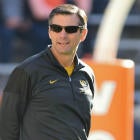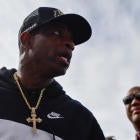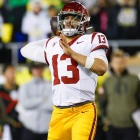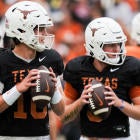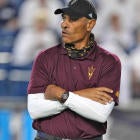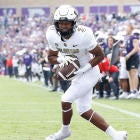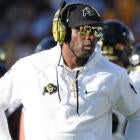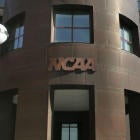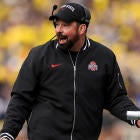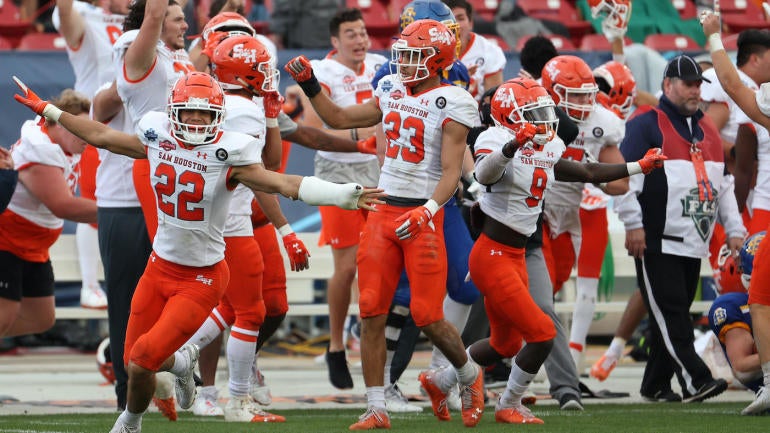
This spring was unorthodox for college football. In addition to intently following spring practices, fans were able to take in a full regular season of college football as the Football Championship Subdivision held its "2020 campaign" in the spring of 2021 due to the COVID-19 pandemic.
It was a blast.
Sam Houston State won its first national title with a thrilling 23-21 win over South Dakota State on Sunday afternoon in Frisco, Texas, drawing an "official" conclusion to college football season -- one that was very much in jeopardy this time last year.
On takeaway from the spring season was that the FCS campaign should stay in the spring every season. Why? Let's break it down.
Exposure was big ... and could be bigger
It was almost impossible for the FCS conferences -- or the division in general -- to put together a full television package on relatively short notice. But the fact that the title game and one semifinal game were on national network television is massive for the sport. What's more, one semifinal and multiple other playoff games aired on ESPN. That matters in the spring way more than it does in the fall/winter.
Why?
There are a lack of sports options that appeal to a national audience -- except, of course, football.
There have been three professional spring football leagues with hybrid national network TV and highly-visible cable packages over the last three years: the Alliance of American Football, the XFL and this year's Spring League. That proves the thirst for football is there. If executives feel that lower level professional football is a draw, championship-level college football is sitting pretty for a deal that -- by FCS standards -- is game-changing.
The regular season was a bit hidden this year, with most games on streaming services. That's to be expected considering the unexpected move to the spring. While streaming is the wave of the future, it's still a tall order for most of our population to seek out FCS football every weekend. That won't be the case on network and cable TV -- which has shown a craving for football inventory.
A potential high-profile television deal will more than make up the revenue lost for the lack of paycheck games vs. FBS teams in the fall.
Want more college football in your life? Listen below and subscribe to the Cover 3 College Football podcast for top-notch insight and analysis beyond the gridiron.
Opt-outs weren't a big deal
There were a few potential NFL stars who opted out of the season -- most notably ex-North Dakota State quarterback Trey Lance, who was selected third overall by the San Francisco 49ers. Do you know who else was selected in the top 10? Ja'Marr Chase, Penei Sewell and Jaycee Horn -- all of whom are former FBS stars who opted out before the FBS season. Or, in Horn's case, right in the middle.
Like it or not, players opting out is the wave of the future. It just so happens that there are more players at the FBS level who have put themselves position to do so than there are at the FCS level. Sure, COVID-19 was oftentimes cited as a reason for players bailing, but it's apparent that it didn't impact the decision-making of NFL scouts.
Are there going to be FCS players who choose to sit out a hypothetical spring season? Of course. But there were only five FCS players who heard their names called in Cleveland, with four more Division II or III players added into the mix.
Simply put, FCS players need a season, and a more visible one will likely bump up that number in future NFL drafts.
In-person attendance indicated passion
A total of 7,840 saw Sam Houston's win over South Dakota State at Toyota Stadium -- which was limited to 50% capacity. Did you see the passion? Fans didn't just sit through a 75-minute lightning delay, they partied through one. Of course, Sam Houston being somewhat local had something to do with it. But one thing has become clear around the country as stadiums have opened up: fans aren't going to take watching live sports for granted ever again.
Let's expand on that a bit.
Die-hard fans of FCS teams might not want to hear this, but a lot of times, their schools are second in line in the minds of college football fans. Sam Houston fans and alums might travel to Texas or Texas A&M on Saturdays instead of staying in Huntsville, many Jacksonville State fans are passionate about Auburn or Alabama and Kennesaw State fans routinely don the red and black of the Georgia Bulldogs; I know because I live in the same county.
That won't be the case in the spring. Instead of heading to a 90,000-seat cathedral of college football, fans and alums are more likely to hang around campus and take in an FCS game since it's the only show in town. As mentioned above, a TV deal will more than make up lost revenue from paycheck games. Increased ticket sales will also play heavily into that equation.
Star power
No Trey Lance? No problem.
Wide receiver Jequez Ezzard and quarterback Eric Schmid balled out for the national champs, signal-caller Eric Barriere was a stud for Eastern Washington and running back Pierre Strong, Jr. led the potent South Dakota State rushing attack to the brink of winning it all. Would the causal sports fan have any idea who these people are had it not been for a spring season? Heck no.
What's more, those players shed light on programs that, let's be real, were completely anonymous to those of us who don't follow the sport on a day-to-day basis. That not only matters for their respective athletic departments, but for enrollment, donations, etc.
The trickle-down effect from superstars showing out this spring is massive, and would even be bigger in the future.













